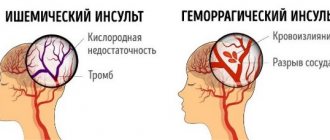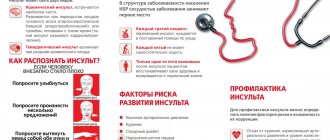Heart attack and stroke are considered the main “killers” of the 21st century. These diseases have a high mortality rate. And if a person survives, he often becomes disabled or has serious complications, which cannot but affect his lifestyle. People who have had a heart attack or stroke have to change their habits. Sometimes this can also apply to driving a car. Can they refuse to replace a driver’s license after a heart attack or stroke, AiF.ru asked lawyer Sergei Kormilitsin . According to him, if these diseases do not lead to serious complications or new diagnoses, then the person has the right to drive a car.
“A heart attack or stroke does not in any way affect the ability to drive a vehicle if it does not result in the development of any diseases from this list - “On the lists of medical contraindications, medical indications and medical restrictions for driving.”
This decree establishes a list of diseases for which you cannot drive vehicles. And in this list there is no mention of a heart attack or stroke, so they have no right to refuse a replacement or issuance of a driver’s license,” the expert said.
Questions and answers When will older drivers fail a medical examination to replace their license?
Consequences of cerebral hemorrhage
There are ischemic and hemorrhagic strokes.
The first occurs as a result of sealing the vascular lumen with a blood clot or thrombus. A certain area of the brain does not receive nutrients and oxygen from the blood, which leads to the death of nerve cells and disruption of important body functions. A hemorrhagic stroke is a rupture of a vessel in the brain, after which a certain area is filled with blood, which puts pressure on the nerve fibers and also causes disruption of brain functions.
The consequences in both cases can be as follows:
Impaired motor skills and loss of coordination. This is often caused by damage to the cerebellum or spinal stroke.
Paralysis of the side of the body opposite the brain hemisphere affected by the stroke. Arms, legs, and facial muscles fail.
Neuropathy, which consists of a violation of the senses - the patient ceases to distinguish smells, tastes, and temperatures.
Visual impairment. It may lose its sharpness, objects in front of the eyes seem to split into two, and the field of view narrows.
Mental disorders. In many cases, people after a stroke suffer from depression, frequent mood swings, nervousness, aggressiveness and anxiety.
Speech impairment - aphasia. The patient cannot speak clearly and has great difficulty perceiving the words of the interlocutor.
Violation of urodynamic function. The patient experiences problems with urination and defecation, and urinary or fecal incontinence occurs.
Disability, inability to work, or death. They often become a consequence of a stroke that affected a large area of the brain, or if medical care was not provided in a timely manner.
In cases where a stroke is defined as a micro-stroke, a small part of the patient’s brain is affected, the chances of successful treatment and recovery are quite high. Violation of body functions is minimal. After completing a rehabilitation course and the conclusion of a special commission, you can drive a car. But this is allowed only after testing. It is absolutely contraindicated to drive a car or work as a driver after paralysis, in case of muscle spasms or epilepsy.
What to do if you have a stroke?
How to prevent a stroke, properly provide assistance and mitigate its consequences, said Inna Borisovna Tsyngeeva, head of the neurology department No. 2 of the Republican Vascular Center of the N.A. Semashko Republican Clinical Hospital.
Strokes happen only in old age.
Is it so? – Indeed, in most cases, people over 60 years of age are susceptible to stroke. However, our lifestyle, unhealthy diet, and physical inactivity lead to strokes becoming younger,” notes Inna Borisovna. – Unfortunately, we have an increased number of patients with strokes, whose age is 35-40 years. If a stroke occurs at a young age, it is worth understanding that the person has a chronic disease, blood disorder, or autoimmune disease. If you are over 60 years old, this is most likely due to vascular diseases: hypertension, atherosclerosis, a consequence of improper correction of risk factors.
Who is at risk and what are the risk factors?
– As with heart attacks, men are more vulnerable. Women before menopause have estrogen protection, explains the doctor. – But women who have reached menopause and older are also at risk. Modern women are workers, breadwinners of the family and at the same time mothers and housewives. And as a result, colossal emotional and physical stress equalizes the risk of stroke.
Speaking about risks, the doctor emphasized the importance of monitoring and timely correction of behavioral risk factors. These are low physical activity, smoking, lack of proper rest, reaction to stressful situations, consumption of large amounts of fatty meat and refined foods. A combination of several factors, which is not uncommon in modern people, further increases the risks of stroke and heart attack.
How is an ischemic stroke different from a hemorrhagic stroke?
– Ischemic stroke occurs as a result of blockage of a vessel by a detached thrombus or as a result of the growth of an atherosclerotic plaque. There is only one result: blood does not flow, oxygen supply to the brain area is disrupted.
Hemorrhagic stroke is the most dangerous, often ending in death; against the background of high pressure, a vessel ruptures and blood flows into the brain tissue and cranial cavity.
According to statistics from the Republican Vascular Center, every 10-12th person dies, and 50% of patients become disabled after a stroke. Some are to a greater extent completely immobilized and need constant care, others are to a lesser extent, with a slight deficiency, after 3-4 months of rehabilitation they recover and return to normal life.
"Golden time"
“When you have a stroke, every minute is precious, and the patient’s life depends on how quickly the stroke is recognized and timely and correct assistance is provided,” the doctor emphasizes. – It is very important to inform people about risk factors and early signs of stroke, which will help, most importantly, to save life and minimize the patient’s disability. The “golden window” is 4.5 hours when, in the event of an ischemic stroke, a blood clot can be dissolved or, with the help of neurosurgeons, an operation can be performed to remove the blood clot from the lumen of the vessel. Thanks to the new thromboaspiration technique, the patient’s chances of recovery increase significantly. In the event of a hemorrhagic stroke, timely surgery will save life and cause less damage to brain tissue. It is also important to understand that the presence of chronic diseases, such as diabetes, arrhythmia, atherosclerosis, which were the cause of the attack, complicates the course of the stroke and the period of recovery of the body after.
What are the characteristic signs of a stroke that everyone should know?
- So, let's remember. If you notice that something is wrong in the face: if a person cannot smile symmetrically, half of the face is distorted, one eye may not close, the corner of the mouth is drooping. Speech is impaired, as if there is “porridge in the mouth”; the person cannot raise an arm or leg. Sound the alarm, call an ambulance. Remember, your attentiveness will help save the life of a person, perhaps a dad, mom, grandma, grandpa, or even a stranger.
Be attentive to your loved ones,” Inna Borisovna urges. – It happens that a spouse took alcohol, took a steam bath, and he became ill, had a stroke, those around him do not notice, they blame everything on alcohol, and time passes. Don’t be indifferent, don’t pass by on the street, when you see that a person is feeling unwell, come up and ask, maybe it’s a stroke. Then you need to urgently call an ambulance by phone. 03, 103.
How can I help before the doctors arrive?
– Before the ambulance arrives, it is necessary to lay the patient down with his head elevated. If you feel nauseous, turn your head to the side, provide rest and access to fresh air. Take off tight clothes, unfasten your tight belt and tie. Under no circumstances should you give anything to drink or eat, as pharyngeal functions may be impaired and the person may choke. Also, the patient should not get up and walk. Until the ambulance arrives, you need to stay with the patient, then convey to the doctors all the information you know.
How can you prevent a stroke?
– According to experts, most strokes occur due to the growth of atherosclerotic plaques in the vessels. If you have high cholesterol, that is, it is above 5 millimoles per liter, you need to sound the alarm. It is necessary to regularly monitor blood pressure and take a cholesterol test twice a year. If it is elevated, it is necessary to follow a diet, limit fatty meats, and take statins as indicated. And these rules are not discussed, it’s like brushing your teeth,” says the neurologist. – At any age, you need to monitor your weight, the body mass index (BMI) should be less than 25. To do this, you need to consume less refined fats and carbohydrates, give up alcohol and smoking, and walk more. It's advisable if you exercise, but consult your doctor before engaging in strenuous exercise. If the vessels are already changed, then excessive load can lead to rupture - hemorrhagic stroke. Follow your doctor's recommendations and take prescribed medications correctly. Rest, get enough sleep and think positively!
Rehabilitation activities
People who have suffered from a stroke quite often ignore the ban on driving if they feel “healthy”. It is difficult to give up the habit of using your own rather than public transport. And the patient gets behind the wheel of a car without prior rehabilitation and passing tests, without thinking about his own safety and the risk to others.
The general ban on driving after a stroke is three to six months. During this period, the body will be able to recover to a satisfactory state. Types of rehabilitation measures:
To restore muscle performance, sessions with a physiotherapist are prescribed.
Exercises with a speech therapist aimed at restoring correct speech and swallowing function.
Massage to tone muscles. Prescribed by a specialist depending on the severity of the disease.
Adaptation to everyday life and complex drug therapy.
Vision diagnostics. Contacting an ophthalmologist is mandatory if the question arises about whether you can drive a car.
Psychological help. Patients who often become depressed, sad and cry need sessions with a qualified psychotherapist.
All of these procedures are aimed at speedy recovery of the patient. Even with minor brain damage, it is necessary to undergo a rehabilitation course to prevent a relapse, especially in a driving situation.
When should you not drive after a stroke?
After a stroke, a general ban on driving is imposed for a period of 3-6 months. Next, the medical commission, guided by the degree of damage and severity of the disease, after studying all the complications that have developed, will make a decision on the possibility of driving. For example, if the field of view decreases by more than 20 degrees, the medical commission will not give permission to drive a car.
As a result of a stroke, the human psyche often suffers. There may be sudden mood swings, depression, and the inability to adequately assess the situation and make quick and correct decisions. Moreover, almost all drugs used to correct mental problems are contraindicated when driving a car.
Complications such as partial paralysis or muscle spasticity are also a complete contraindication to driving.
Sometimes epilepsy develops after blood circulation in the brain is disrupted. In this case, it is impossible to drive the car.
Question answer
What form of medical certificate is needed when replacing a driver's license?
Taking tests
After the driving ban expires, a medical commission evaluates the patient’s condition, identifies possible complications and issues a conclusion whether the patient can drive. The tests are as follows:
Testing your knowledge of road signs. The patient's ability to correctly and quickly recognize traffic signs and respond to them is assessed. Visual perception is tested.
Orientation in the surrounding space. The purpose of the test is to determine the quality of vision and the ability to coordinate one’s actions in a specific situation.
The task is to independently plot a route. Allows you to draw a conclusion about the adequacy of the patient’s thinking and check the correctness of his reasoning, as well as evaluate attentiveness.
This test was developed by Belgian scientists after studying the medical records of 1,700 patients. Half of them successfully passed the preliminary driving test in a car with an instructor. The new proposed test takes much less time (only 15 minutes) and can be performed in a doctor's office. With 80-85% reliability, the test shows who can drive a certain time after a stroke, and allows you to evaluate not only motor skills and vision, but also the patient’s thinking.
When can stroke patients drive?
According to the results of two recent studies, which are planned to be presented at the next annual meeting of the American Stroke Association in Nashville (American Stroke Association), after a stroke, patients' driving skills significantly deteriorate.
According to lead author of one of the studies, Megan Hird, a postdoctoral fellow at the University of Toronto and a physician at St. Michael's Hospital in Canada, ischemic stroke patients make a significant number of serious errors while driving. , which can lead to emergency situations.
The team analyzed the driving skills of patients who had suffered a moderate ischemic stroke within the past 7 days. The researchers studied these skills in an artificial environment and then compared the results with the results of a control group. It is worth noting that the control group consisted of the same number of healthy participants, that is, individuals who did not have the specified pathology.
In the study, scientists found that stroke patients made 2 times more errors while driving compared to participants in the control group. In addition, stroke patients were approximately 4 times more likely than healthy individuals to try to follow the bus.
Another study by a team led by Kristin Vesely, a postdoctoral researcher at the University of Toronto, looked at the effects of hemorrhagic stroke on driving ability. Scientists analyzed the performance of patients who suffered subarachnoid hemorrhage and compared the data with the results of healthy volunteers.
Note that people with hemorrhagic stroke usually need more time to recover. Therefore, the researchers analyzed driving skills using a simulated driving test 3 months after the stroke.
The study found that participants who had suffered a hemorrhagic stroke were 2 times more likely to be involved in emergency situations (collisions), 3 times more likely to drive outside road markings, and make more errors when making left turns compared to participants in the control group.
Scientists recommend that patients with even a mild form of ischemic stroke begin to restore their driving skills no earlier than a month later. However, according to M. Hurd, many patients do not follow such advice.
According to Doojin Kim, a researcher at the University of California Medical Center, doctors should advise stroke patients to refrain from trying to drive a vehicle. However, the length of the waiting period depends on the severity of the stroke and the rate of improvement in health. Scientists recommend that, if possible, patients, after completing all the necessary procedures related to rehabilitation, take a driving test on a stimulator. After which, take a repeat driving test.
Based on materials from https://www.webmd.com
Possible problems
Even after successful rehabilitation, the patient may be unable to drive a car. A number of serious problems can prevent this:
Lack of clarity of thinking.
It is difficult to assess the situation on the road.
Untimely reaction and inhibition of actions.
These factors adversely affect driving behavior. The patient poses a risk to other road users and can be seriously injured. Severe deterioration of the visual field and cognitive impairment after a stroke are categorical contraindications for driving.
In 70% of cases, after a stroke, cognitive impairment occurs (the functioning of complex brain functions, for example, memory, attention, orientation, decreases). It is they that cause concern among specialists, since it is not possible to determine with a sufficient degree of certainty the impact of these disorders on the ability to drive a car.
Types of circulatory disorders
Normal blood circulation in humans
In medicine, there are two types of stroke. Each of them has its own causes and characteristic features.
The ischemic (cardioembolic) type occurs due to the closure of the lumen of blood vessels by a thrombus or blood clots. As a result, a certain area of the brain ceases to receive a sufficient amount of oxygen and microelements supplied through the bloodstream. This entails dysfunction and death of tissue cells.
Hemorrhagic stroke occurs due to rupture of blood vessels in the brain. The result is a large amount of blood, which negatively affects the functioning of the nerve fibers. This provokes their dysfunction.
As a result of ischemic and hemorrhagic stroke, tissue cell death and impaired blood circulation to the brain are observed. Against the backdrop of ongoing changes, systems and organs cease to function normally.











